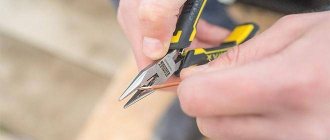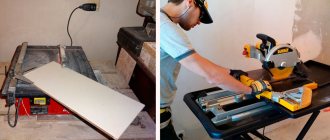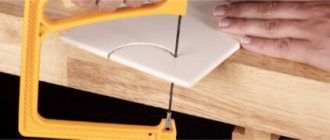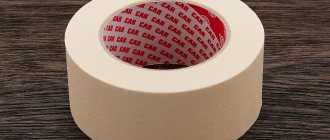Do-it-yourself glass cutting
Glass is one of the most common construction and decorative materials.
Due to its light transmission and good strength properties, it is used in a wide variety of areas of human activity. For many centuries and millennia, at first being a luxury item for noble nobles and rulers, glass gradually entered our everyday life so firmly that it is difficult to imagine a place where it could not be found today in one form or another. Window blocks, glass of cars, trains, airplanes and even submarines save a person from various external influences. Mirrors, picture frames and showcases, crystal vases and chandeliers, decorative glass inserts for interior doors, Christmas tree decorations and stained glass windows are just a small fraction of glass objects that delight our eyes every day. Humanity has learned to make glass with a wide variety of properties. Thanks to special additives and heat treatment technologies, glass with different hardnesses and various optical properties can be produced today.
The characteristic disadvantages of this material are traditionally considered to be the high fragility of glass and the difficulty of cutting it at home. While the first of these shortcomings can be easily dealt with, the second greatly complicates the life of home craftsmen. To learn how to cut glass yourself, let's look at the features of this process.
DIY glass cutting
The glass cutting process consists of the following steps:
- Preparatory
. At this stage, the glass is cleared of debris and wiped with a clean cloth soaked in any degreaser. The presence of even the smallest particles on the glass surface may not allow for a high-quality and complete notch, which, in turn, will affect the quality of the cut. - Marking
. Today there is a fairly large selection of different markers that allow you to leave high-quality markings on glass products. But in order to prevent the trace of paint left on the glass from playing a cruel joke on you, we still recommend marking the cutting location on the surface located under the glass being cut. In this case, you will not only not leave the drawn line, but you will also be able to control the depth of the notch. - Cutting
_ Depending on your experience and the steadiness of your hand, you can use a ruler or guide the glass cutter along the marked line without the aid of a guide. At this stage, it is very important to know that the cut must be performed in one pass, without breaking away from the drawn line. Otherwise, you risk not only missing the original notch, but also cutting a new groove next to the first one. You can imagine the consequences of this yourself. - Separation of the cut glass part
. Carefully inspect the groove left after the glass cutter and, if necessary, additionally cut through the missing areas on the glass, after which you can safely proceed to separating the section to be cut. To do this, lightly tap the cut area on the opposite side of the glass, place a ruler under it and sharply press on the edge of the glass. If the manipulations are carried out correctly, the glass will separate exactly in the place where you planned.
Glass cutting tools
Today there is a large arsenal of a wide variety of tools for cutting glass. These can be either traditional diamond, roller glass cutters, or various scissors using the most modern technologies, including laser and hydraulic cutting. Usually, to cut glass at home, it is enough to have a good roller or diamond glass cutter.
Often, when buying a glass cutter, you can see the following picture: an unlucky seller of the tool you are interested in, in front of everyone, “writes out” the most incredible shapes on the glass and separates them without much difficulty. You immediately pay him your hard-earned money, take the advertised product with you and, rejoicing at such luck, quickly run to repeat this trick. But when you come home and start working, you realize that everything is not as simple as you thought at first. For some reason, the glass cutter you bought slips on the glass and doesn’t want to obey you.
It turns out that it's all about the glass! As mentioned above, glass, like steel, can have different hardnesses. Regular glass can be cut well and without any problems with any glass cutters. On the other hand, tempered glass, commonly used in the automotive or furniture industries, is almost impossible to cut at home. If you have such a need, we recommend contacting specialized organizations.
Features of cutting corrugated and patterned glass
Cutting decorative corrugated and patterned glass has its own characteristics. Despite the apparent complexity, it is quite possible to cut such glass at home. The cutting process is similar to cutting ordinary glass, the only difference is that the cut itself must be made not from the front, but from the back, smooth side. Thus, cutting any glass is a common and far from difficult task, but it must be done with strict adherence to safety rules and with the use of the necessary personal protective equipment. Go for it, and you will succeed, because it is known that it is not the gods who burn the pots!
Video on the topic
Watch a useful video on how to properly cut glass with a glass cutter.
If you have any doubts about cutting glass yourself, then contact us. Our specialists will professionally cut glass according to your requirements.
Nuances when cutting at home
When considering the question of how to cut tempered glass at home, you need to pay attention to choosing a more suitable tool. The following glass cutters are widely used:
- Diamonds are used extremely often today. Due to the use of durable and hard material, the tool can last for a long period. From time to time it is necessary to sharpen the cutting edge using a special sharpening stone.
- Roller. Cutting tempered glass at home is often done using a tool like this, as it is ideal for the job in question. The set may contain 6 rollers, which are often made of cobalt and tungsten. Due to the combination of a large number of rollers made of durable and wear-resistant material, the cutting task is greatly simplified.
- The oil version is similar to the version with rollers, but the design has a special container for storing oil. When performing work, lubricants are added to the cutting zone, thereby greatly simplifying the cutting process. That is why this design option is used more often than others.
Before starting work, you need to check the degree of sharpening of the cutting edge. When using a worn tool, the quality of processing is significantly reduced, and there is a possibility that the cut line created will have insufficient depth.
If you find an error, please select a piece of text and press Ctrl+Enter.
In a review article on our website dedicated to tempered glass, it was said that it cannot be processed. “And if you can’t, but really want to, then it’s possible,” and then we will try to tell you how this principle is implemented in practice in relation to tempered glass.
Types of glass cutters
First of all, you need to remember that there are different types of glass: regular window glass, tempered glass, plexiglass, acrylic glass, corrugated glass, and ten more options. Also, even an ordinary one can be quite thick or, conversely, thin and very fragile. Depending on the type, the tool and cutting method are selected. But using a glass cutter is the most common option.
The construction market offers several options for glass cutters:
- Diamond can cut glass of almost any thickness and its service life is long. A diamond is used as a working element, which, if necessary, can be easily turned with an unsharpened edge; roller has a working part, which is made of an alloy of cobalt and tungsten and is characterized by increased strength . The number of rollers ranges from one to six and they can be replaced; The oil one has rollers and a reservoir with lubricant, which flows to the surface and reduces friction. When worn out, the roller itself and its fastening require replacement; with a compass function that allows you to cut circles. Most often, an ordinary oil glass cutter is mounted on a special device with a scale that allows you to set the diameter of the circle.
Before cutting glass with a glass cutter, you need to prepare it:
- clean from dirt, possibly wash and wipe dry; remove the slightest dust, since the smallest particle that a glass cutter stumbles upon can become a source of cracking; if used glass is used, it is also degreased with kerosene; drawing cutting lines.
Safety regulations
The approaches to how to properly cut glass with a roller or diamond glass cutter are the same. The main thing is to follow certain rules and remember safety precautions:
- wear protective equipment: gloves and goggles; place the glass on a flat surface and check that it fits well and does not vibrate; scratch along the ends of the cut line so that you can ease the pressure and avoid chipping the edge; a diamond glass cutter is taken at the base of the handle and guided without much pressure along the intended line; The roller glass cutter is clamped with a pinch between the thumb, ring and middle fingers, and the index finger is responsible for the pressure. It should be pressed to obtain a whitish cut; On the reverse side, lightly tap along the cut line; move the glass to the edge of the table and break it off along the cut line.
There is a relationship between the width of the glass and the width of the strip that breaks off freely:
| Glass width, mm | Strip width, mm |
| 3 | 3 |
| 4 | 5 |
| 5 | 7 |
| 6 | 9 |
| 8 | 12 |
Craftsmen have their own style when working with glass surfaces, but you should adhere to some general recommendations on how to cut glass correctly:
- there is no strong pressure applied to the glass cutter so that the edges of the cut do not crumble; one line - one cut, you cannot “cut” again in one place; movements with a glass cutter must be fast and confident. Optimal: 1 m in 2 seconds; towards the edge, the pressure decreases, which allows you to avoid crumbling the edges; mark the table, not the glass itself.
How to work with a glass cutter
Before the main work, you should prepare the glass itself and the surface on which we will cut it. To do this you need:
- thoroughly clean the glass from dust, dirt, if water or other liquids are used, then dry completely;
- degrease with white spirit or pure kerosene;
- make markings and draw cut lines with a marker.
It is convenient to work on a wide table or workbench. Its surface must be completely smooth and even, since glass must be cut with any glass cutter on a plane without any differences in height. The slightest vibration and loose contact of the glass to the working surface should not be allowed. Since we are dealing with a fragile and traumatic material, we need to remember about safe work methods.
- We put on personal protective equipment: glasses, gloves.
- Place the glass sheet on a prepared, flat surface.
- We use a glass cutter along the edges of the cut line to prevent the possibility of chipping.
- We take the diamond tool by the base of the handle and smoothly move it along the intended line without applying any force.
- The glass cutter on rollers is clamped with three fingers: thumb, middle and ring. The index finger is needed to press the tool. You should get a whitish stripe.
- We lift the sheet a little and carefully tap the cut line from below.
- Then we move the glass to the edge of the tabletop, align it along the cut line and break it off.
Experienced glaziers work with a glass cutter without additional tools. If you lack the skills, it is better to use a metal ruler so that the tool does not move from the intended cutting line. You cannot use a glass cutter along the same line twice. The movement should be confident, smooth, fast.
How to replace a glass cutter
Not only professional tools will help when cutting glass, but also not quite ordinary ones, for example, such as scissors or a grinder. They can easily cope with such work under certain conditions.
Scissors cannot cut glass in the air, but you can cut glass with scissors in water. In a liquid, gravity is less and the scissors make not a cut, but a microcrack. This crack plays the role of a capillary into which water will enter. Capillary water has a wedging effect at weak points of crystallization and the glass breaks off in pieces.
Interesting! If it is necessary to cut out shaped parts, the glass is placed in cold water and then boiled for several hours. After cooling, the tension inside is relieved and the material becomes soft.
There are several ways and options for cutting thick glass. The simplest one is to use an oil glass cutter if the thickness is no more than 20 mm. But as an option, you can use a grinder. The dimensions of the tool should be small and convenient. The diameter of the circle is the smallest, then it will be easier to work with.
Plexiglas: glass or plastic
Not all types of glass can be cut with glass cutters. There are materials on the construction market that either cannot be cut at home at all, or to cut them you need to familiarize yourself with certain rules, and some are cut very simply.
One of the most flexible materials for cutting is plexiglass. It is a transparent plastic with thermoplastic properties. The material is very easy to process, but there is one feature: low thermal conductivity, due to which the edges of the cut immediately heat up. Therefore, before cutting acrylic glass, you need to think about how to cool it.
Basic tools for cutting plexiglass:
- hand saw for metal; a circular saw; cutter; milling machine; stationery knife.
The choice of tool directly depends on the thickness of the glass: the thinnest - with a knife, the thickest - with a circular saw or on a machine. Electric saw blades are special for plexiglass, but are suitable for copper and aluminum.
You need to work quickly with a hacksaw or stationery knife. Unlike window glass, the cut line can be drawn several times. During cutting, the blades are cooled so as not to melt the edges of the cut. The resulting cut will have roughness, which can be removed when processed with sandpaper.
The low melting point makes it possible to cut plexiglass with a jigsaw and obtain a wide variety of shaped products. In a jigsaw, the file is replaced with nichrome wire. which connects to a transformer with an operating voltage of up to 4 V. The heated wire easily and softly passes through the plexiglass along any trajectory. the cut is smooth and even, requiring no additional processing.
Rules for cutting tempered, grooved and fire-resistant glass
Very rarely, it may be necessary to cut fireproof glass, for example to replace it in an oven or fireplace door. At home and without special skills, such a procedure should not be carried out, since heat-resistant glass is a split system consisting of several tempered and non-tempered glasses. But some craftsmen use a grinder with a diamond blade of very small diameter. To avoid crumbling when cutting fireproof glass with a grinder, pour oil over the cut line. If you use not a grinder, but a machine with a diamond wheel, you can cut tempered glass at home. In this case, a cooling emulsion must be continuously supplied to the cutting wheel. You can cut it, but all the properties of such glass will be nullified. The technology for manufacturing tempered glass often involves imparting certain properties to an already finished product, such as a fireplace door.
Another type loved by designers and often used in everyday life for decorative purposes is corrugated glass. It differs from the usual one in that it has a non-smooth surface on one side. It is necessary to cut corrugated glass on the flat side with any glass cutter, but an oil cutter is preferable. To make it convenient to work, the table is covered with a soft cloth, on which a glass sheet is placed.
Glass products have always been extremely popular: frescoes, stained glass windows, dishes and many other things created from scraps of this material have always amazed people with their grace and smooth lines. Looking at this magnificence, it seems that to create it you need to be a real professional, with extensive experience working with glass and a lot of necessary tools, and a mere “mortal” would never master this complex science. In fact, not everything is as sad as it seems at first glance, and anyone can learn how to cut glass at home.
How to cut glass with a glass cutter?
Since glass is one of the most common building materials, it is often used for a variety of household needs. For example, to replace an accidentally broken window, as a decorative insert in an interior door, or to decorate a greenhouse. And then the need inevitably arises to cut out a piece of the required size from a large canvas. A glass cutter is usually used for this. And at first glance it seems that this is not so difficult. However, craftsmen who first faced the question of how to cut glass with a glass cutter should keep in mind that this matter has its own subtleties and nuances.
How to properly cut glass with a glass cutter: general recommendations
Working with glass requires care and precision. It is imperative to take care of your own protection - wear thick gloves and large glasses so as not to be harmed by fragments and glass dust. It is more convenient to cut glass on a table; it should be covered with cloth or newspapers.
Those who do not know how to cut glass with a glass cutter should listen to the following recommendations from professionals:
- the sheet of material must first be cleaned and marked;
- The glass cutter must be positioned perpendicular to the glass surface;
- you need to move it along the line smoothly - from the far end to yourself;
- the degree of pressure should be sufficient, but not excessive - the glass should crack slightly when cut;
- the pressure should be uniform along the entire length of the cut.
Before starting work, you should also choose a tool, because there are different types of glass cutters: roller and diamond.
How to cut glass correctly with a roller glass cutter?
This glass cutter has a metal roller with a diameter of slightly more than 6 mm. With this tool you can cut thin glass – no more than 4 mm thick. When working with a roller glass cutter, you should press it lightly so that a clearly visible white stripe remains behind.
Preparing glass for cutting
A lot depends on this stage, and the preparation process itself depends on what kind of glass you decide to use for cutting. New glass, purchased specifically for this purpose, can be simply wiped, and it is best to use old newspaper for this (this will avoid streaks and settling of small fibers). You will have to work with used material, spending much more effort. First, you need to rinse it thoroughly using special glass cleaning products. Secondly, degrease with a cloth soaked, for example, in kerosene and, finally, dry indoors to prevent dust from getting on the surface.
In addition, preparing glass also involves cutting it. As you know, you are unlikely to be able to achieve completely waste-free production when working with glass, especially if you are planning to get a product that is not quite the correct geometric shape. However, accurate calculation will reduce possible waste to a minimum. At this stage, a more rational solution would be to combine the longer side of the glass with the long side of the workpiece. Please note that the resulting scraps should not be thrown away; they can be used in the future to create new products.
Tempered glass cutting instructions
The high strength and hardness of the surface determines that quite serious problems can arise when cutting. When considering how to cut tempered glass, you should pay attention to the following points:
- The workpiece is prepared by annealing. This technology provides uniform heating of the surface. Due to this, the stress that forms inside the material at the time of hardening is eliminated. Due to such tension, it becomes much more difficult to achieve the required dimensions.
- The annealing process involves heating water to a certain temperature, after which the workpiece is lowered into it. It is worth considering that car glass or decorative glass should be cut at different temperatures, it all depends on the brand of material.
- The exposure time of tempered glass in water can vary significantly. In some cases it takes about an hour, the most difficult versions are aged for a month.
- After reaching the required temperature, the product is slowly cooled. The work is performed slowly, thereby eliminating the possibility of even the smallest defects.
- Once the surface temperature has dropped, you can put on glasses and cut using a glass cutter. You can cut glass for your phone in a similar way.
- Markings should be made before cutting. Smooth and accurate lines are achieved by using a square and other measuring instruments.
- The material should be pressed with medium force, as a high load can lead to serious defects. The cutting is carried out quickly; it is not recommended to try to make the fishing line again due to the fact that such actions can lead to splits and cracks.
- At the time of cutting, you should be careful, since it will not be possible to re-make the cutting line. After receiving the required mowing line, a rod is placed under it, and with a sharp push the product is divided into two parts.
READ What circles to cut ceramic tiles
If you do the work carefully, you can get a high-quality cut. The end surface can be finished using a grinding stone.
What tools to use?
Many of us are accustomed to thinking that glass can only be cut correctly and efficiently with a glass cutter. But what to do if you need to cut a piece of glass urgently, but you don’t have this tool at hand? There is another unusual, but no less effective method that helped our great-grandfathers get out of this situation. Such a tool is ordinary scissors, available to any owner. Let's look at each method in detail.
Option 1: glass cutter
The technology for cutting glass with a glass cutter is quite simple. To do this, you must comply with certain conditions and choose the right glass cutter. Today, the choice of this tool is quite wide, which allows you to turn work into pleasure.
- Diamond glass cutter, time-tested and remains a leader in its field to this day. Glass cutters with a beveled cutting edge are suitable for home use. This tool is designed to cut glass up to ten kilometers and is suitable for any thickness of the material used. From time to time, such a glass cutter needs to be sharpened on a special whetstone.
- Roller. As the name suggests, the cutting part of such a glass cutter is made in the form of a roller made of a durable cobalt-tungsten alloy. The number of rollers can be from one to six.
- Oil. This tool works on the principle of a roller glass cutter, with the difference that a reservoir with oil is built into its handle, which is automatically supplied to the roller. Suitable for cutting thick glass.
To learn how to choose a good glass cutter, watch the video:
So, having dealt with the glass cutter, place the glass on a flat surface. Mark the glass and get to work. To make the task easier, you can use a ruler. It is worth considering the point that the line must be drawn the first time, otherwise a repeated attempt will lead to cracking of the surface. When cutting glass with a glass cutter, you need to apply equal force along the entire length of the line.
Option 2: ordinary scissors
Cutting glass with scissors like paper is not a fairy tale, but a completely everyday reality. For this purpose, you will need the scissors themselves (sewing scissors are best for this) and a tank of water (preferably hot). It is necessary to apply markings on the glass in advance, and then elementary physics comes into play: scissors create a microcrack, and the capillary effect completes the process. Of course, the result obtained will differ from that achieved with a glass cutter, but if necessary, this method can help out significantly.
Types of glass and features of work
Cutting ordinary glass does not pose any difficulties. Not only glass cutters, but also ordinary tailor’s scissors do an excellent job with this task. But what should those who have set themselves the task of obtaining a glass product with a more complex configuration do? To do this, it is worth familiarizing yourself with the properties of some glasses.
- Tempered glass products . In fact, it is impossible to cut tempered glass at home - it loses its properties. If you want to purchase an item with elements of this material, it is worth considering cutting it in the early stages. In addition, work with it must be carried out by professionals, since the hardening process of the resulting product can only be carried out under certain conditions.
- Fluted glass . This patterned glass is especially popular in glazing doors or creating decorative interior elements. Unlike tempered glass, you can cut such glass yourself. Working with it is not much different from working with ordinary glass, the only difference is that the cut is made from the smooth side. A roller glass cutter is best suited for this.
- Acrylic or organic glass is a transparent plastic created on the basis of synthetic resins. No special tools are required to cut it. At home, a metal saw, cutter and other tools used for edge processing do an excellent job of this task. In addition, a regular stationery knife can handle glass whose thickness does not exceed 2 mm.
In any case, it is worth remembering that working with any glass must be accompanied by compliance with certain precautions. The presence of thick gloves and safety glasses are the main conditions for ensuring your own safety. It will not be superfluous to take care of the arrangement of the workplace. Since working with glass involves the presence of fragments, cover the work surface with any material that you won’t mind getting rid of. Feeling safe will allow you to achieve the best results.
Preparatory stage
To minimize problems, the glass should be washed thoroughly and dried completely. If the material is new, it is enough to wipe it with unnecessary newspapers. Old glass is washed, degreased with kerosene and dried.
To ensure that the glass meets the required dimensions, it must be marked with a regular pencil. The cutting must be done in such a way as to minimize waste, so the long side of the glass is combined with the longer side of the future product.
Required Tools
Before cutting glass with a glass cutter, you need to decide what kind of tool you have. The fact is that there are two types of glass cutters, and the technology for their use is significantly different:
- A diamond glass cutter
is expensive, but can cut glass 10 mm thick. With this tool you can cut out even complex designs with curved lines. The instrument is held like a regular writing pen at a slight angle (only more vertical). The cut line should be neat, thin and colorless. - A roller glass cutter
cuts glass 1-4 mm thick. There are models with 1, 3 and 6 rollers on sale. Recently, a roller glass cutter with oil has gained particular popularity, since it is the easiest to work with. The tool is held strictly perpendicular to the working surface, and the pressure force is adjusted with the index finger. If all cutting technologies are followed, the line will be white.
Choosing a tool for cutting glass is not difficult, but the work process itself is more difficult, because for a good result you need to be as careful and attentive as possible.
The glass is completely laid on the prepared work surface. To begin with, you can practice on a small piece. Experts recommend placing a thick wooden ruler under the glass cutter before cutting, positioning it so that it is away from the drawn line. To prevent the ruler from sliding, place several pieces of rubber under it.
When cutting, you need to apply equal force evenly and draw an accurate line right away. Repeated attempts to draw a line in the same place will result in cracks. If the line does not work out, you need to step back 1 mm from the place of the first attempt and try again. After the cut, the glass must be placed so that the cutting line coincides with the edge of the working surface. The suspended underside of the glass is carefully tapped with a glass cutter and broken off, holding part of the sheet on the table. You can break the glass with your hands or with pliers (with pieces of hose attached to the ends).
But if you don’t have one or the other tool at hand, you can try cutting the glass with sharp sewing scissors. It's simple: you need to mark the material and create microcracks using scissors.
Types of glass and features of work
There are practically no problems with cutting ordinary glass. But with other types of glass, serious difficulties can arise.
- Strained glass
.
Cutting tempered glass is practically impossible, since most often when trying to cut it, it simply breaks in random places. If the plans include interior items using tempered glass, its cutting should be carried out immediately before tempering. This means that such work should be entrusted only to professionals.
- Fluted glass
.
Patterned glass is often used for glazing doors or other interior items. The cutting process is no different from working with ordinary glass, only it is better to cut corrugated glass using a roller glass cutter exclusively on the smooth side.











